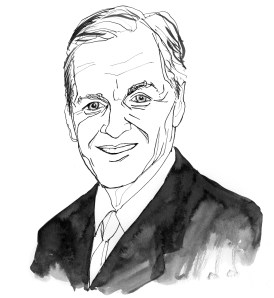
As co-founder and chief executive of Massey Knakal, Paul Massey Jr. has overseen the rise of New York City’s largest investment-sales brokerage. Mr. Massey, 51, talked last week about the launch of the firm’s new Capital Services group, his forecast for 2011 and partner Robert Knakal’s legendary coif.
The Commercial Observer: Massey Knakal earlier this month launched its new Capital Services Group. Tell me about the game plan.
Mr. Massey: Well, we hired Garret Thelander to run that business for us, and what he’s focused on now is recruiting production people. We wanted to be in the mortgage brokerage business and kind of marry those people with our existing 50 sales brokers.
Why now?
It wasn’t market-timed, although I think the market timing is perfect. We had 50 territories and they’re predominately filled, so we were looking back in 2009 on how do we grow our business. We were capital constrained due to where the market was, so rather than open up another office, the question was how do we work our own existing gold mine better and serve clients more.
So we planned for this business going on a year and a half ago.
If you didn’t know better you’d think it was timed to the market.
It absolutely is perfect timing. That being said, it’s great. I also think that it’s energizing the company because that essentially opens 17 more territories. We’re not going to have one-for-one coverage because the structure for mortgage coverage is smaller.
So the idea is to give the salespeople–or the mortgage originators–a great economic opportunity that they’re probably going to be working on relatively bigger transactions, maybe in two geographic territories.
You’ll be focusing on the commercial mortgage-backed securities market at a time when it’s slowly starting to re-emerge.
Yes, the re-emerging CMBS market. With our bread and butter being the multifamily, small to mid-size commercial assets, the market for financing never really dried up. There were fewer players, but all through the past couple years there were a number of institutions that had very few legacy issues and were still lending at rates that were compelling.
So for the properties that we focus on, there will still be financing.
The idea had been percolating since 2009, but I imagine the Capital Services market was always an idea that was on your mind.
Yeah, we had been talking about whether we should be in allied businesses for a long time, but in a counterintuitive way 2009 made us look harder at those opportunities.
Among Massey Knakal’s offices, one in Brooklyn Heights, 205 Montague Street, was placed back on the market after selling last year. Is flipping coming back in style?
Yeah. I think there are going to be examples of people who bought in 2009, who are now going to be able to flip. There’s a growing market confidence, so I’m not sure whether that building will be a success, but I’m not going to be surprised to see more examples of that kind of thing. I haven’t seen any flipping in the last few years.
Another building Massey Knakal was involved with recently was in the East Village, where a four-story, mixed-use asset sold for more than $4 million, at a record $1,112 per square foot. Why is the East Village fetching such high prices now?
Velocity was double what it is now across the board in Manhattan. You have to keep that in mind, and that goes for the East Village, too. At the height of the market, in 2006 and 2007, there were an average of 40 sales in that territory. I’m pretty sure last year that number was 20. So we’re up from 1 percent velocity to 1.7 percent velocity–but normal velocity is 2.5 percent.
So it’s another example of how the market is improving dramatically, but it probably will continue to improve even more in terms of volume and pricing.
What is your 2011 forecast for the Manhattan real estate market?
My forecast for Manhattan in ’11 is that volume will grow past 2 percent, heading back to stabilized volume.
I think that in 2011 there is reason for optimism, in the sense that it’s a tale of two worlds. You have distressed assets that more and more are going to be coming to the market. And discretionary sellers, at the same time, are going to be gaining confidence–so in both of those categories there’s going to be more velocity.
Just consider that there are 7,000 to 8,000 distressed assets that are going to hit the market over the next two or three years. That’s going to potentially add a couple thousand sales to each of the next couple years, bringing velocity back to normal. And I think that’s the reason for the optimism. And I think they perceive pricing stabilizing, which we’re seeing, too.
How closely do you work with your partner, [Commercial Observer columnist] Robert Knakal?
Day-to-day, it’s a perfect partnership. Bob’s our top producer and chief strategist. The partnership with us is great because I work on the day-to-day things at the company, and we have a weekly meeting where we talk strategy, and he’s usually way out there in terms of being ahead of the curve. And knowing what’s about to happen is a great thing to have on your side. And we’ve both moved in the direction of working in our strengths, which I think helps the company.
Besides all of his experience and his talent, the other thing people mention when they talk about Robert Knakal is his hair. Do you have an opinion on the matter?
Yeah, I am jealous.
jsederstrom@observer.com


